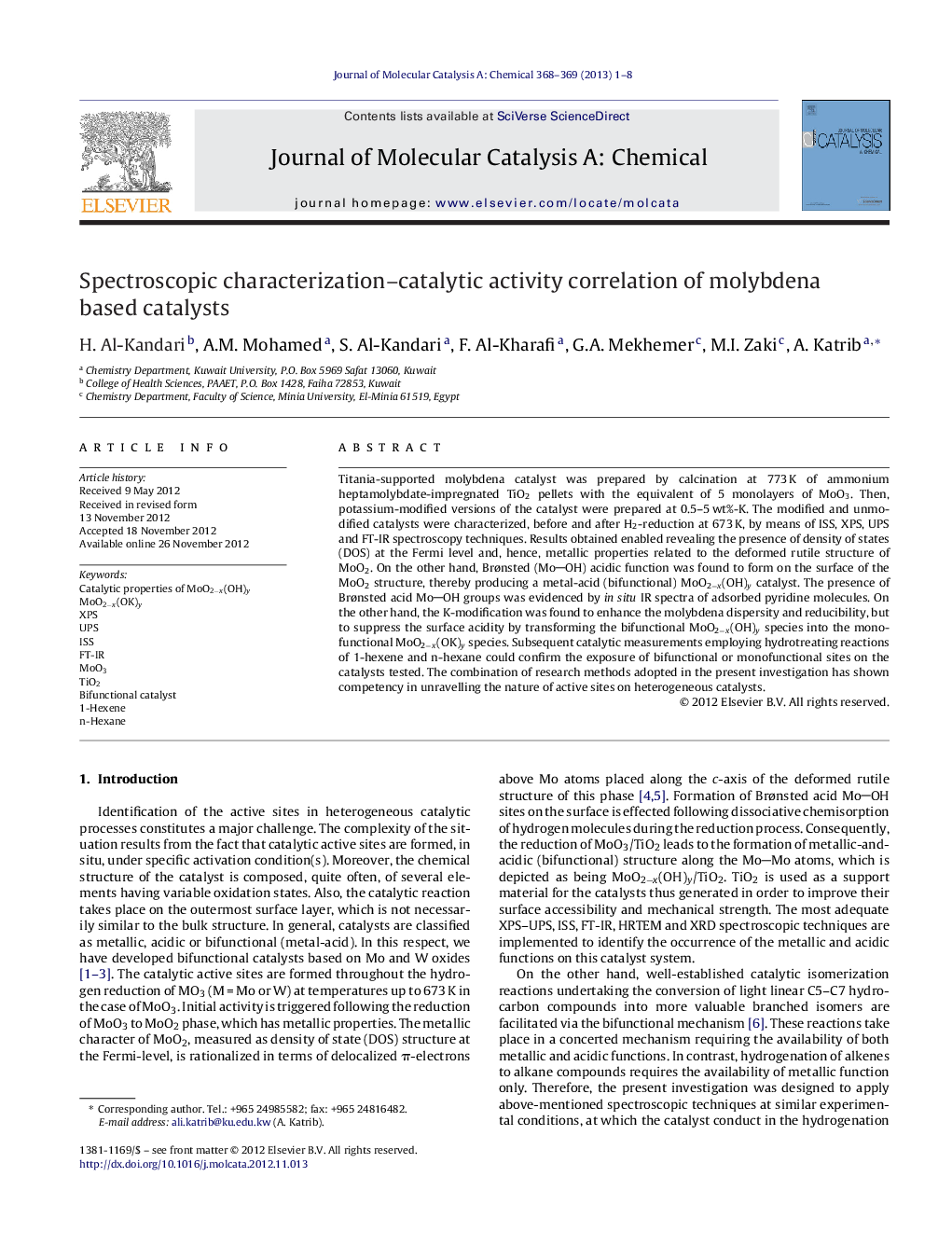| کد مقاله | کد نشریه | سال انتشار | مقاله انگلیسی | نسخه تمام متن |
|---|---|---|---|---|
| 65907 | 48409 | 2013 | 8 صفحه PDF | دانلود رایگان |

Titania-supported molybdena catalyst was prepared by calcination at 773 K of ammonium heptamolybdate-impregnated TiO2 pellets with the equivalent of 5 monolayers of MoO3. Then, potassium-modified versions of the catalyst were prepared at 0.5–5 wt%-K. The modified and unmodified catalysts were characterized, before and after H2-reduction at 673 K, by means of ISS, XPS, UPS and FT-IR spectroscopy techniques. Results obtained enabled revealing the presence of density of states (DOS) at the Fermi level and, hence, metallic properties related to the deformed rutile structure of MoO2. On the other hand, Brønsted (MoOH) acidic function was found to form on the surface of the MoO2 structure, thereby producing a metal-acid (bifunctional) MoO2−x(OH)y catalyst. The presence of Brønsted acid MoOH groups was evidenced by in situ IR spectra of adsorbed pyridine molecules. On the other hand, the K-modification was found to enhance the molybdena dispersity and reducibility, but to suppress the surface acidity by transforming the bifunctional MoO2−x(OH)y species into the monofunctional MoO2−x(OK)y species. Subsequent catalytic measurements employing hydrotreating reactions of 1-hexene and n-hexane could confirm the exposure of bifunctional or monofunctional sites on the catalysts tested. The combination of research methods adopted in the present investigation has shown competency in unravelling the nature of active sites on heterogeneous catalysts.
Figure optionsDownload high-quality image (70 K)Download as PowerPoint slideHighlights
► Hydrogen reduction of MoO3 produces MoO2 structure of metallic properties.
► Brønsted acid MoOH groups were formed on the surface.
► Consequently, a bifunctional MoO2−x(OH)y catalyst is formed on the sample surface.
► XPS–UPS, ISS and FT-IR spectroscopic techniques enable to characterize this system.
► Alkali K metal addition suppresses the Brønsted acid MoOH functions.
► Catalytic reactions of 1-hexene and n hexane were investigated on both systems.
Journal: Journal of Molecular Catalysis A: Chemical - Volumes 368–369, March 2013, Pages 1–8